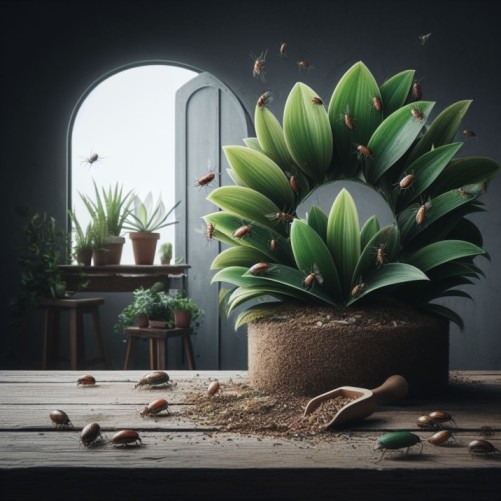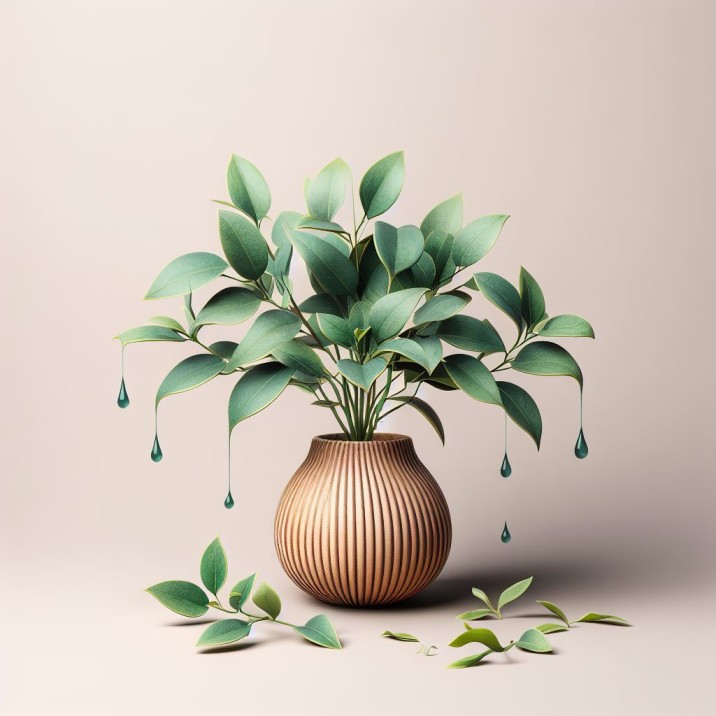11 Best Tips for Care for Indoor Plants in Winter (2023)
Care for Indoor plants in Winter Is necessary for best growth. Your favorite plants may have difficulties due to shorter days and cooler temperatures. You can maintain the health and energy of your indoor plants by following a few easy measures. Benefits from regular winter care include better air quality, improved mood, and appearance.

Your plants will flourish if you do routine care, such as changing watering schedules, maximizing sunlight exposure, and cleaning leaves. Furthermore, these actions promote higher humidity levels and prevent bug infestations.
Key elements of effective plant care in the winter include embracing dormancy and stifling the need to repot. Overall, take care of your indoor plants throughout the winter will guarantee that they continue improving the beauty of your house.
Contents
- 1 Reduce Indoor Plants Watering in Winter
- 2 Pay Attention to Sunlight
- 3 Avoid Less Temperature
- 4 Pause the Fertilizer
- 5 Check Houseplants for Pests
- 6 Up the Humidity
- 7 Keep Foliage Clean
- 8 Resist Repotting
- 9 Don’t Worry About a Few Dropped Leaves
- 10 Embrace Dormancy
- 11 Rotate Houseplants in Winter
- 12 Guide for Care for Indoor Plants In Winter
- 13 FAQs
Reduce Indoor Plants Watering in Winter
Plants enter a period of dormancy in the winter, which lowers their water needs. Allow the soil to dry out in between watering to prevent over watering.

With your finger, check the moisture level of the soil; if it seems dry at least an inch deep, water is needed. Root rot and other problems might result from over watering in the winter.
Pay Attention to Sunlight
The winter season brings shorter days and lower sunshine. To give your indoor plants the most sun exposure, place them next to windows.

If there is insufficient direct sunshine, consider using artificial grow lights to make sure your plants get enough light.
Even in the colder months, adequate light is necessary to preserve plant health and support development.
Avoid Less Temperature
Indoor plants have specific preferences for temperature. Avoid exposing them to extreme cold or draughts, since these things can harm them.
Keep the temperature in your home constant and within the range that is best for the plants you have. To stop cold air from damaging your plants, use drought excluders or protection around windows.
Pause the Fertilizer
Most indoor plants grow more slowly in the winter. Therefore, it is wise to trim back or stop fertilization.

If you fertilize too much at this time, the soil may become overloaded with nutrients, which will be harmful for your plants. When the growth season starts in the spring, start feeding as regular.
Check Houseplants for Pests
Pests that affect indoor plants grow all throughout the winter. Check your plants regularly for indicators of infection, such as discolored leaves, strapping, or small insects.
To stop pests from spreading to healthy plants, isolate and treat affected plants right away.

Up the Humidity
Winter heating may dry out the air, which could be bad for your plants. By sprinkling your plants, using a humidity tray, or putting a humidifier nearby, you may increase the humidity in the area.
Many houseplants benefit from extra water and flourish in higher humidity levels.
Keep Foliage Clean
Your plant’s leaves may collect dust and grime, which may decrease their capacity to absorb light.
To keep the leaves of your plant clean and free of dust, brush it off using a moist cloth. This simple maintenance procedure improves photosynthetic respiration in plants.

Resist Repotting
Your indoor plants shouldn’t be repotted in the winter. Plant repotting may be difficult for them, and this time of year, their development is slower.
Avoid moving to a larger pot until spring when they are more active and capable of handling it.
Don’t Worry About a Few Dropped Leaves
Some leaves frequently fall off throughout the winter as part of the natural dropping process.
Normally, this is not a reason for anxiety. Maintain your routine of care, and if the conditions improve, your plant should recover with new growth.
Embrace Dormancy
Winter occurs when many indoor plants become dormant. They need less water and fertilizers at this time.
If growth or flowering slows down, don’t worry; simply adjust your care plan. This is a typical occurrence in their seasonal cycle. and this the process for Care for Indoor Plants in Winter.
Rotate Houseplants in Winter
During the winter, rotate your indoor plants regularly to encourage even growth and sunlight exposure.
This prevents bending towards the light source and promotes symmetrical development in plants. To encourage stronger and more attractive plants, rotate them every few weeks. So These all are the best Care for Indoor Plants in Winter.
Guide for Care for Indoor Plants In Winter
During the winter months, caring for indoor plants can be a challenging but rewarding task. To ensure the well-being of your winter-hardy plants and those sensitive to the cold climate, it’s essential to follow some key guidelines for indoor plant care in the winter. Start by providing the right environment for your green companions.
If you have a greenhouse or a dedicated indoor garden space, that’s ideal. Make sure to keep the temperature above freezing, especially for those plants that can’t tolerate the cold, even to as low as 0 degrees. For those in zones with milder winters, maintaining a temperature of around 15 degrees will suffice.
It’s also crucial to keep an eye on your indoor tropical plants, replicating the warm and humid conditions they thrive in. Watering is essential but should be adjusted to accommodate the natural slowing of growth during winter, with a little extra care during dry January. Consider Leroy Merlin for supplies and keep an eye on your indoor plants’ moisture needs, taking care not to over water them.
Additionally, make sure to place your plants strategically, maximizing the available natural light indoors, or consider using grow lights to compensate for the reduced daylight hours. These practices will ensure that your indoor plants continue to thrive even in the coldest winter months, making the indoor garden in your home a source of delight throughout the year.
FAQs
Should I fertilize indoor plants in winter?
For indoor plants, it’s generally preferred to cut back on or stop fertilizing throughout the winter because of their slower development at this time.
How do you keep indoor plants in the winter?
Focus on correct watering, maximize sunshine exposure, maintain a constant temperature, and keep an eye out for pests while taking care of indoor plants in the winter.
Why should you reduce indoor plant watering in winter?
Plants that go into dormancy need less water to avoid overwatering and possible root rot.
What should you do to address the reduced sunlight in winter?
For better sun exposure, place indoor plants near windows, or if there is insufficient direct sunlight, use artificial grow lights.
Why is it essential to maintain a consistent indoor temperature for your plants during winter?
It is important to establish a steady atmosphere for indoor plants since sudden temperature changes, draughts, or excessive colds might hurt them.
What should you watch out for and address in your indoor plants during the winter?
To stop pests from spreading, keep a look out for pests like discolored leaves, webbing, or small bugs. Affected plants should be quickly isolated and treated.






